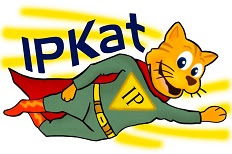From Chile, we received the news that the
Chamber of Deputies approved a project that regulates urban graphic art.
Establishing a legal framework ‘that allows the creation of urban graphic art, as expressions of the urban visual arts, both in national public goods and in private goods, always with the prior consent of its owner’ is the aim of the project.
According to the Bulletin, the graphic creations that the law covers are ‘all those artistic works that consist of images or texts expressed freely in walls, undergrounds, bridges, tunnels, or other public goods’. In this case, the artists would need a permit granted by the municipality, competent authority or owner.’ The said permit would be free of charge and granted within 30 days from the date of the request.
Yet,
Bulletin 11810 notes that the law will be considered if it follows these principles:
‘a) Advancement, respect, promotion and harmonious relationship between the right to freedom of expression and the right to live in a pollution-free environment, enshrined in the Constitution and International Treaties ratified by Chile and in force.
b) Promotion of an active and binding participation of civil society in decision-making regarding the spaces to be intervened for the development of urban graphic art.
c) Active collaboration among the various agencies responsible for encouraging the development of urban graphic art.
d) Consideration of urban graphic art as a tool for social inclusion, neighbourhood, and community identity.’
An exception to the urban art, which will not be tolerated, is the one that provokes hatred due to race, ethnicity or social group, sex, sexual orientation, gender identity, religion or belief, nationality, political or sports affiliation; the illness or disability suffered by a person or group of people, or promotes the use of weapons or violence.
Municipalities must ensure compliance with the provisions of this law. The Culture Committee will now consider the project.
Apart from graffiti been permitted in these circumstances, what else can we learn from this project?
There has been plenty of debate and thoughts from different parties on what is the state of affairs of graffiti towards the copyright system. Is graffiti art? Art written in trains and walls bring matters to discussion in copyright law, for example: originality comes to mind, authorship, joint authorship, tangibility; reproduction; ownership and intellectual common, to name a few. Besides these, we need to think about moral rights. Indeed, by the project recognizing graffiti as an artistic work, we cannot challenge it, because as any other type of work, it is open to protection under copyright.
The courts in Latina America are willing to protect outside the box [giving me more confidence that graffiti will be actually protected under copyright]. For example in Argentina the
CAMARA CIVIL - SALA J (Civil Chamber) granted protection to a make-up sanctioning the defendant to payment for infringement of economic and moral rights (
here). In the European courts, specifically in the UK fixation for this type of work either the graffiti or the make-up will be problematic. There is a lack of clarity regarding the requirement of permanence for artistic works. This is noticeable in cases such as
Creation Records and
Metix v Maughan as well as
Merchandising Corporation of America v Harpbond (known as the Adam Ant case).
This debate of ‘fixation’ has also received some debates when the work is a tattoo and no doubt it will received some interesting discussion in the case of graffiti.




















